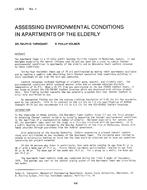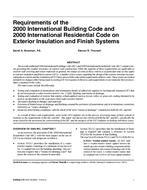The ANSI/ASHRAE Standard 15-1989 suggests a procedure for trapping ammonia when released from a refrigeration plant to provide a means for safe release to the atmosphere. This procedure utilizes water as the trapping medium and recommends that one gallon of standing water in a receiver vessel be provided for every pound of ammonia that must be absorbed. Alternatively, the standard suggests that ammonia-water mixers operate under the conditions of 2 gpm of water per lb/min ammonia. Because actual performance of the procedure was unknown, experiments were conducted evaluating the effectiveness of this ammonia trap. Three situations were investigated experimentally: (1) vapor ammonia absorbed into a partially filled vessel of water, (2) liquid ammonia absorbed into a partially filled vessel of water, and (3) vapor ammonia absorbed into a water spray. The receiving tank contained 200 gallons of water and was 4 feet in diameter and 11 feet tall. The experiments identified how much of the 200 lbm of ammonia released was absorbed by the water. Relative to the ANSI/ASHRAE recommended procedure, about 90% of the vapor ammonia was absorbed in the partially filled vessel. With the release of liquid ammonia, all the ammonia was absorbed in the partially filled vessel. The increased absorption of liquid ammonia is due to the lower liquid mixture temperature. In the situation involving the water spray, the vapor ammonia flow and water flow rates were set at the ANSI/ASHRAE recommended ratio (2 gallons water per pound of ammonia) and approximately 86% of the ammonia released was absorbed. Desorption of ammonia trapped in water was observed to result in the decrease of ammonia concentration in the liquid mixture by a factor of about 2 in 50 days.
Product Details
- Published:
- 1990
- Number of Pages:
- 202
- File Size:
- 1 file , 2.9 MB
- Product Code(s):
- D-RP-591


